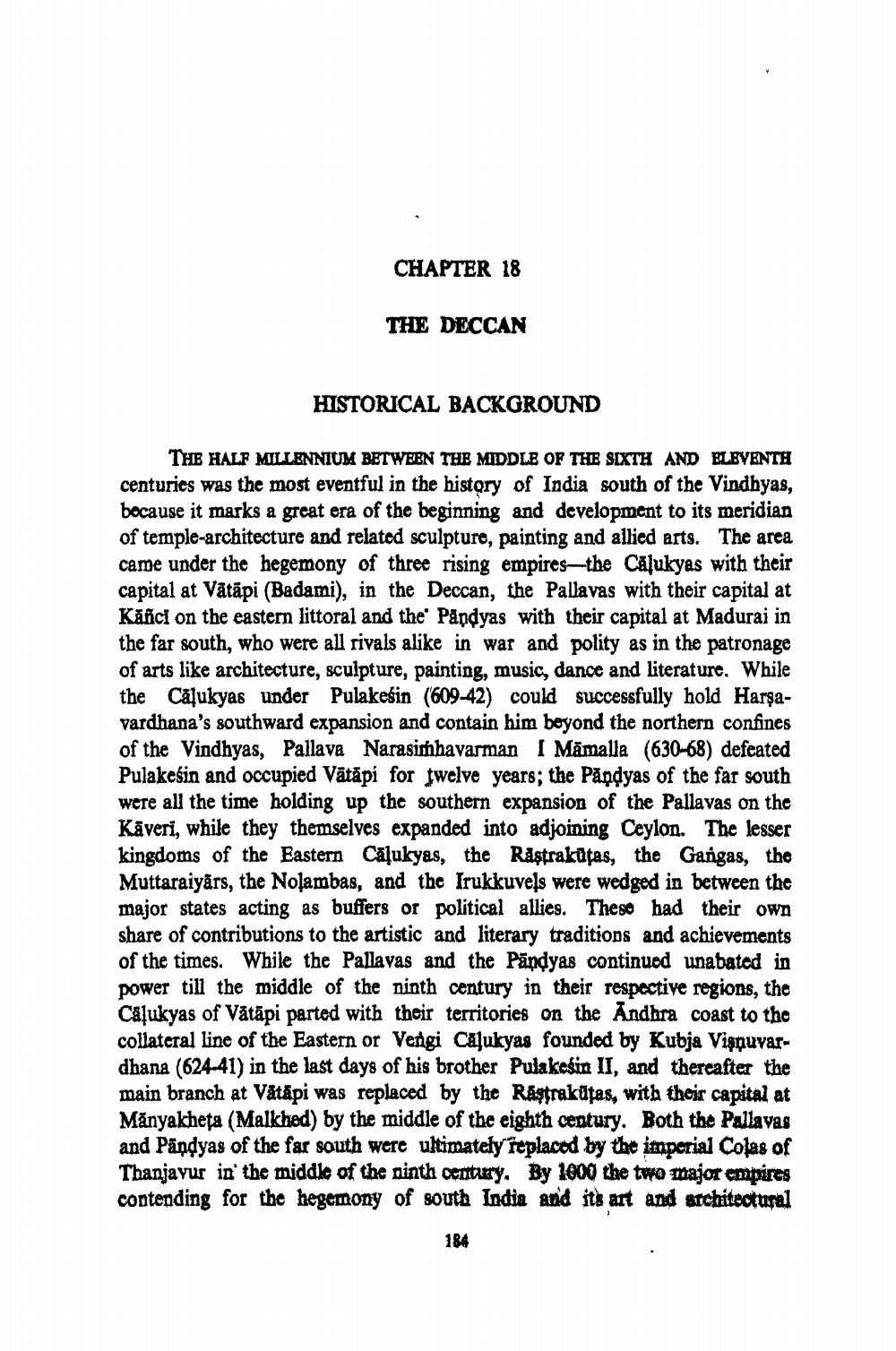________________
CHAPTER 18
THE DECCAN
HISTORICAL BACKGROUND
THE HALF MILLENNIUM BETWEEN THE MIDDLE OF THE SIXTH AND ELEVENTH centuries was the most eventful in the history of India south of the Vindhyas, bocause it marks a great era of the beginning and development to its meridian of temple-architecture and related sculpture, painting and allied arts. The area came under the hegemony of three rising empires--the Calukyas with their capital at Vätäpi (Badami), in the Deccan, the Pallavas with their capital at Kånci on the eastern littoral and the Påndyas with their capital at Madurai in the far south, who were all rivals alike in war and polity as in the patronage of arts like architecture, sculpture, painting, music, dance and literature. While the Calukyas under Pulakesin (609-42) could successfully hold Harşavardhana's southward expansion and contain him beyond the northern confines of the Vindhyas, Pallava Narasimhavarman | Māmalla (630-68) defeated Pulake in and occupied Vätāpi for gwelve years; the Pandyas of the far south were all the time holding up the southern expansion of the Pallavas on the Kāveri, while they themselves expanded into adjoining Ceylon. The lesser kingdoms of the Eastern Cāļukyas, the Răstrakūtas, the Gargas, the Muttaraiyars, the Nolambas, and the Irukkuvels were wedged in between the major states acting as buffers or political allies. These had their own share of contributions to the artistic and literary traditions and achievements of the times. While the Pallavas and the Pāndyas continued unabated in power till the middle of the ninth century in their respective regions, the Calukyas of Vätādi parted with their territories on the Andhra coast to the collateral line of the Eastern or Vergi Calukyas founded by Kubja Vişnuvardhana (624-41) in the last days of his brother Pulakesin II, and thereafter the main branch at Vätāpi was replaced by the Raştrakutas, with their capital at Mãnyakheta (Malkhed) by the middle of the eighth century. Both the Pallavas and Pandyas of the far south were ultimately replaced by the imperial Colas of Thanjavur in the middle of the ninth centuxy. By 1000 the two major empires contending for the hegemony of south India and its art and architectural
184




